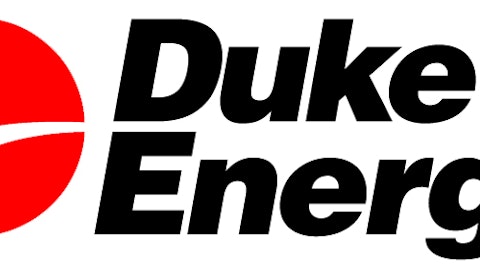
The coming inflection point
An inflection point is when some dramatic change happens. A company that has been growing earnings by 20% or 30% a year all of a sudden hits the proverbial wall and becomes a 5% to 10% growth story. In Netflix, Inc. (NASDAQ:NFLX)’s case, there are two inflection points that investors need to understand are inevitable in this business.
The first question Netflix investors need to ask is, at what point does size become an issue? There are signs that size may already be a problem. With over 30 million subscribers, Netflix may reach saturation in the domestic market faster than investors realize. According to Bernstein Research’s Carlos Kirjner, the stock market might be expecting 50 million domestic subscribers by 2020 for Netflix, Inc. (NASDAQ:NFLX), but by his research 43 million looks like a more realistic number.
Bernstein expects about 90 million U.S. households with streaming capabilities by 2020. However, only about 70% will have Internet connected televisions and would constitute Netflix’s addressable market. If the company captures roughly 60% of this market, they would have about 42 million subscribers.
According to the same analyst, Amazon.com, Inc. (NASDAQ:AMZN) Prime already has about 3 million members that use Prime Instant Video as their primary streaming service. Based on the growing popularity of Amazon.com, Inc. (NASDAQ:AMZN)’s service, it’s no sure bet that Netflix, Inc. (NASDAQ:NFLX) will capture 60% of its addressable market. When you add in the risk from services like Hulu, and new entrants like Outwall’s Redbox Instant service, this 60% penetration rate becomes even more difficult to believe.
Competition that is far stronger than before
The second question facing Netflix investors is, at what point does new content not bring enough new subscribers to offset the cost? In today’s market new content deals drive the stock price, as reported recently by Fool.com’s contributor Adam Levine-Weinberg. He mentioned that a new deal recently signed by Netflix, Inc. (NASDAQ:NFLX) drove the stock price up 7%. The problem is, while the new content is attractive, Netflix doesn’t release the cost of the content for competitive reasons. This means it’s a mystery if Netflix got a good deal or overpaid.
This leads us to the third question investors need to ask, how can they be sure Netflix isn’t overpaying for content? For point of comparison, Amazon.com, Inc. (NASDAQ:AMZN) has about $4.8 billion in net cash and investments waiting to be used for content creation and acquisition. The previously mentioned Redbox Instant is backed by Verizon Communications Inc. (NYSE:VZ), and they generate about $4 to $6 billion in free cash flow every quarter. Verizon Communications Inc. (NYSE:VZ) also has about 90 million wireless subscribers, and honestly the company has the firepower to blow Netflix, Inc. (NASDAQ:NFLX) out of the water if it comes down to a bidding war.
Netflix’s free spending, and an under appreciated threat
The fourth question Netflix investors need an answer for is, what happened to management’s original expansion plans? The original plan was to allow U. S. streaming and DVD profits to fund international expansion. However, the company’s aggressive expansion spending is apparently outstripping this profitability. In just the last few years, Netflix has raised its long-term debt level from about $200 million to $700 million today.
Last but not least, and under-appreciated threat to Netflix, Inc. (NASDAQ:NFLX)’s dominance in the streaming market is the ability of content owners to create their own apps and avoid using Netflix completely. Most of the major television stations such as NBC, CBS, and ABC, all offer their own apps for popular mobile operating systems. This begs the question, with millions of iOS and Android users, has Netflix’s first mover advantage been negated?
As you can see, there are many questions facing Netflix and none of them have an easy answer. With the stock selling for over 175 times projected earnings and analysts calling for earnings growth of roughly 19.5%, the biggest question facing the stock might be why are investors willing to pay so much? Considering that Amazon sells for a projected P/E ratio of 27% more, yet is expected to grow earnings by a 90% faster pace, one could easily argue that Amazon is a better value.
Investors who are unwilling to pay triple digit P/E ratios might consider Verizon Communications Inc. (NYSE:VZ). The company offers a solid dividend yield of just over 4%, and it appears that Verizon is willing to spend money to try and compete in the streaming video game. Netflix has nowhere near the financial capabilities of its competition, the company is taking on debt to expand, and at some point subscriber growth will slow down. Investors who expect huge growth from Netflix, Inc. (NASDAQ:NFLX) are likely to be disappointed, and this may occur sooner than they think.
The article 5 Questions That Netflix Investors Need To Ask originally appeared on Fool.com and is written by Chad Henage.
Chad Henage owns shares of Verizon Communications (NYSE:VZ). The Motley Fool recommends Amazon.com and Netflix. The Motley Fool owns shares of Amazon.com and Netflix. Chad is a member of The Motley Fool Blog Network — entries represent the personal opinion of the blogger and are not formally edited.
Copyright © 1995 – 2013 The Motley Fool, LLC. All rights reserved. The Motley Fool has a disclosure policy.





